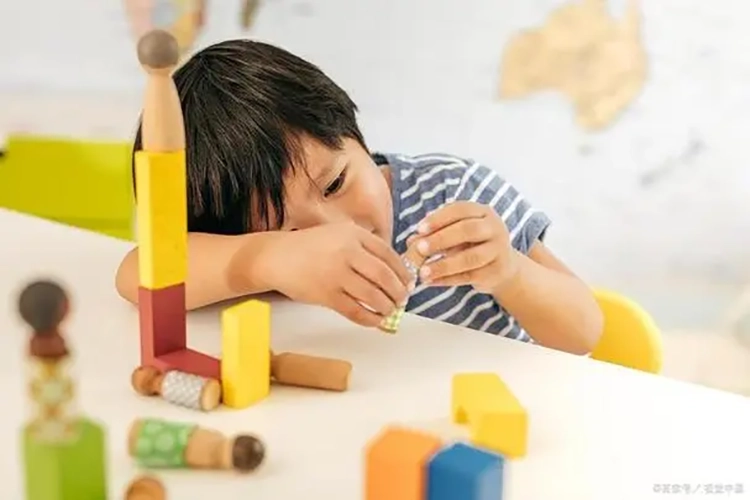The relationship between hyperactivity disorder (ADHD) and math learning has been the focus of research.
There have been studies suggesting that children with ADHD may experience difficulties in math learning, which may be related to their executive dysfunction, affecting their ability to handle complex tasks.
The effects of ADHD on math learning
Hyperactivity disorder (ADHD) is a common neurodevelopmental disorder characterized by inattention, hyperactivity, and impulsive behavior.
The disorder can have a wide range of effects on an individual’s learning and life, with math learning being a commonly affected area. Here are the effects of ADHD on math learning:

01 Lack of concentration
Children with ADHD often have difficulty focusing and are easily distracted and unfocused, which can lead to an inability to consistently pay attention to the teacher or complete homework in math class.
Inattention can also lead to errors in solving math problems, as they may miss key information or steps.

02 Executive dysfunction
Children with ADHD have impaired executive function, including areas such as working memory, cognitive flexibility, and inhibitory control, which are essential for math learning.
Lack of executive function can affect math problem solving, such as difficulty performing multistep calculations or logical reasoning.

03 Difficulty with time management
Children with ADHD often have difficulty managing their time effectively and tend to spend too much time on one problem during math assignments or tests, resulting in overall slow progress.
Time management difficulties can also affect the completion of math tests, as the child may not be able to complete all the questions in the time allotted.

04 Math Anxiety
Because children with ADHD are more likely to have difficulty learning math, they are prone to math anxiety, which is fear and stress about math learning.
Math anxiety can further affect learning outcomes, making ADHD patients perform worse in math.

05 Social difficulties
Children with ADHD often face social difficulties and may have trouble cooperating with classmates to solve math problems, affecting their learning.
Social difficulties may also lead to feelings of unease or lack of confidence when asking a teacher for help with math problems or participating in class discussions.
Understanding these effects can help parents better support the person with ADHD to progress in math learning and provide help and support accordingly.
A personalized learning approach can help children with ADHD improve their math performance
How can parents boost math scores in children with ADHD? Here are some things that might work:

Multisensory learning
Use multiple sensory stimuli, such as sight, hearing, touch, etc., to help children with ADHD better understand math concepts. Provide a variety of learning experiences using visual tools, audio explanations, and hands-on operations.
Multisensory learning can be implemented in elementary math learning in the following specific ways:
01 Visual Learning
Use visual tools such as charts, pictures, graphics to help students understand math concepts.
For example, use color diagrams to show number relationships, geometric shapes, etc., allowing the ADHD child to deepen their understanding through observation and comparison.
02 Auditory Learning
Parents use verbal explanations, stories and other ways to let children with ADHD receive information through hearing.
Parents can use verbal explanations of math problems, story lines, etc., to help students understand abstract math concepts.
03 Tactile Learning
Use objects, teaching AIDS, etc. to allow children to perceive math concepts through touch and manipulation.
For example, use teaching AIDS such as counting sticks and puzzles to get the child hands-on and deepen their understanding of math concepts.
04 Action Learning
Engage children with ADHD in math learning through movement, action games, etc.
For example, children put 12 nuts on the table in a pile. Then have the child try to rearrange the nuts in a square shape. It is possible that by placing three nuts in four rows, the child will understand that “12=3 x 4”.
05 Multi-sensory integration
Combined with the above multiple sensory learning methods, multi-sensory learning activities are designed to allow students to learn mathematics through a variety of sensory channels such as vision, hearing, touch and movement, and promote better absorption and processing of information.
Step-by-step Learning
Break down math problems into small steps to gradually guide children with ADHD to understand and solve the problem. Help your child build confidence and problem-solving skills through step-by-step instruction and practice.

Gamified learning
Incorporate math learning content into the game to increase fun and interactivity. Stimulate the learning interest of children with ADHD and improve their learning motivation and concentration through gamified learning.
Gamified learning can be implemented in elementary school tutoring by:
01 Math Games
Design fun math games that allow children with ADHD to learn math.
For example, design math puzzles, math card games, etc., in which the child learns math by solving problems, etc.
02 Role Play
Through role playing games, let children play different math roles, such as math detective, math adventurer, etc., through the way to solve math problems, increase children’s participation and interest in learning.
03 Math puzzles
Based on your child’s baseline level of math ability, design a variety of math puzzles and puzzle games that allow your child to solve math problems by deciphering, reasoning, etc. Puzzle games can stimulate the child’s mind and develop their logical reasoning skills.

Personalized Learning Plans
Develop a personalized learning plan based on the learning characteristics of the child with ADHD and the child’s baseline level. Take into account the children’s learning styles, attention characteristics, and pace of learning, and tailor the learning style and pace to suit them.
Use technology AIDS
Make use of technology AIDS such as math learning apps, online education platforms, etc., to provide interactive and personalized learning experiences. These tools can adjust the content according to students’ learning progress and needs to help them better grasp math knowledge.
Group cooperative learning:
Parents organize group cooperative learning activities for children with ADHD to learn and solve problems together with their peers. Develop your ADHD child’s teamwork and social skills through group discussions and cooperative problem solving.

Reward and incentive mechanisms
Establish reward and incentive mechanisms to motivate children with ADHD to actively participate in math learning. Set small goals and give rewards to help them stay motivated and focused on learning.
Parental support is vital to the growth and development of a child with ADHD. Parental care, guidance, and encouragement can help a child overcome difficulties, reach their potential, and achieve well-rounded development.

